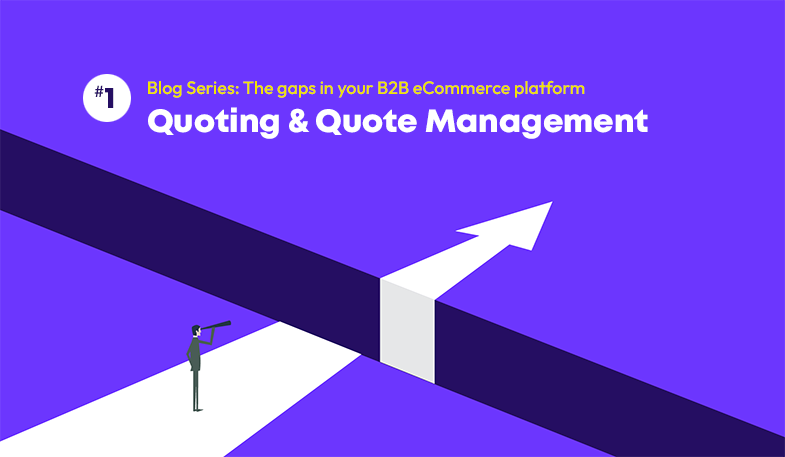Get an Edge with Growth-Driven Website Design

Growth-driven design (GDD) is a design methodology that’s a little more dynamic than most website owners are used to. Making continual improvements to an ecommerce website over time has obvious advantages over full-scale redesigns, but GDD isn’t just about cutting costs or reducing time to launch.
It’s a new approach to website design that challenges business owners to rethink the way they position their brand and how they put their ecommerce and customer data to work.
The Benefits of Growth-Driven Design
GDD is all about tapping into your data, identifying trends, and making small, continual website improvements over time. This approach offers several key benefits to the web design process when compared to full-scale redesigns:
- Lower upfront costs
- Faster time to launch
- Structured process that helps projects stay on budget with less risk of delays
- Regular updates that keep your site fresh as you go
- Less risk in decision-making
That last point is key. Every web design decision you make can be thought of as a gamble; will the investment produce a measurable ROI? When you make changes without the necessary data, you’re placing a big wager that may not pay off. GDD mitigates this risk by ensuring that every website change you make is done with purpose and backed by concrete performance data.
It sounds obvious, but you’d be surprised at how much guesswork there is in traditional web design; development teams always have some data to work with, but most often, they’re making changes and adding elements at the whims of the website owner.
GDD subverts this and demands that every website change—no matter how small—is defensible with data. Aside from being good web development practice, this data-driven approach means that your website will be tailored from the ground up.
Applying Growth-Driven Design to Your Site
The conversion potential that these types of improvements offer is obvious, and given that 83 percent of marketers agree that conversion optimization is a top priority for their website improvement efforts, it’s easy to see why GDD has become so popular for eCommerce websites.
So, how do you put GDD into action?
There are two approaches:
- 1. Launch a completely fresh website built on the performance data of your existing web assets.
- 2. Apply small design changes one at a time to your existing website in order to optimize performance.
But whichever approach you choose, everything starts with your data.
Start with data collection
A growth-driven re-design involves tapping into the data you already have, reviewing the practices of your biggest competitors, and performing new market research to get a better idea of what your market expects.
To kick off the process, work with your internal teams and your developers to create an action plan. Are we looking at a full website redesign or just a few improvements? What does our perfect website look like? If cost weren’t a factor, what elements would we include?
Note the “we” up there. It’s crucial that you take a collaborative approach to your web redesign, regardless of whether or not it’s growth-driven. You’ll need to involve numerous stakeholders in the planning process, from marketing to sales to executives. Don’t think of website improvements as an issue only for designers; you’ll need organizational buy-in at every level if you want to make the growth-driven design process work.
Review your initial data and share it with your team. Make sure to fold in any other sources of customer information and behavior data you have, including the data points in your CRM and eCommerce platform. Pay specific attention to user behaviors on your website and what drives their actions.
Which pages bring in the most traffic? Which landing pages are your most effective lead capture tools? Are there any specific pages that feature unusually high bounce rates?
Testing website changes
After you have some initial research to work with, you can begin applying this data to your development process. If you’re opting for a ground-up redesign, you’ll be using a site launching pad to get your new web experience off the ground.
Think of a launching pad as your website in its most basic form. Instead of all the design features and plugins you’re used to, the launching pad includes only the web elements you’ve determined to be essential from your data collection. From there, it’s easy to build on this framework and create a complete web experience informed by data.
But what if you’re not launching an entirely new website, and you’re just interested in making incremental improvements to your existing assets? In this case, your biggest priority will be to test each change as it’s made. Make a list of goals (based on your data, of course) and make changes one at a time, analyzing the results as you go.
It’s tempting to rush this testing process, but the beauty of GDD is that you don’t have a redesign timeline. You can take as much time as you need to collect usability data. Monitor your website’s performance and collect as much feedback from your customers as you can, particularly as your efforts expand.
For example, you may have a high number of users engaging with your brand via mobile. But according to research from Google, half of consumers—even if they like your business—will choose a competitor website if yours isn’t optimized for the mobile experience. You’ll need to take these factors into consideration during your redesign and make sure that you’re addressing the specific web assets your customers use.
GDD—Design That Keeps on Giving
Unlike a traditional redesign, GDD is never really done. It’s a continual process that you’ll need to keep working on. But while that might seem like a drawback, it’s actually GDD’s biggest advantage. With a structured GDD process backing you up, your website optimization efforts turn from a huge project you tackle every couple years into a manageable system of small improvements that, in our view, is far easier for businesses to manage.
Key Takeaways
- Favor smaller, but much more frequent changes so you can measure results of those changes consistently.
- We can’t overstate the importance of this point: identify measurable analytics for each improvement ahead of time and establishing those standards.
- Decisions on priority, design and functionality should be backed up by data, such as site analytics, ecommerce and customer data.
- Growth driven design forces you to review your website data, KPIs and other performance metrics to gain an understanding of how you are performing. The more you review your analytics, the more you can spot long term trends and opportunities.
Resource Center

A new blog series about the critical eCommerce capabilities missing in most eCommerce platforms for B2B companies. #1: Quoting & Sales Support

A closer look from the Ultra perspective on what we really mean when we talk about headless commerce and why it may not be right for every company.

Davis Art is now the only online K-12 publisher dedicated to the arts, creating top-notch curriculum and resources for art educators nationwide, all from the Ultra Commerce platform.
